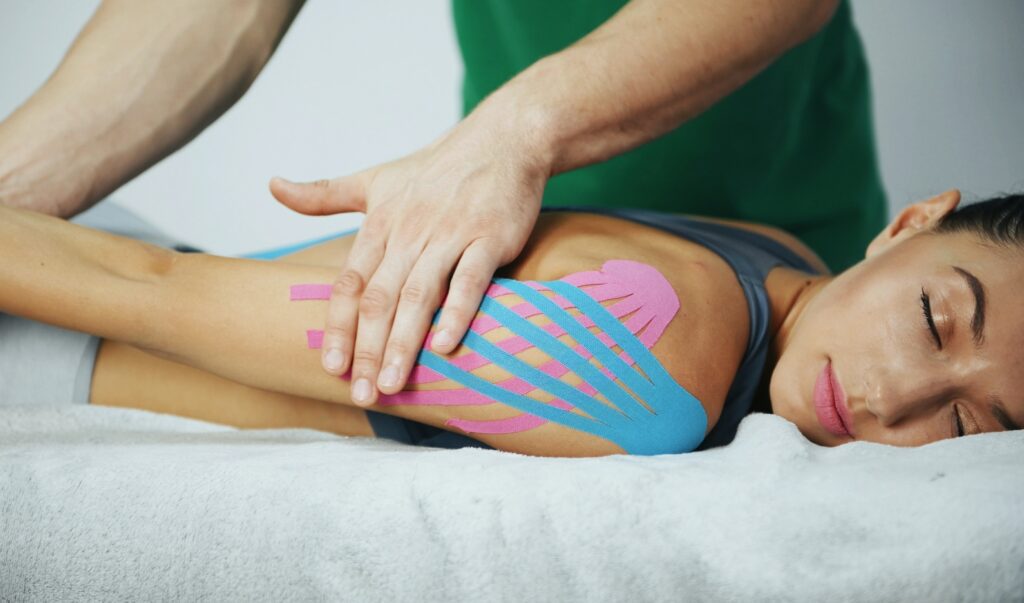The good and the bad about delayed onset muscle soreness
Photos by Getty Images/Unsplash+
Congratulations on finishing your race, but good luck with walking down the stairs for the rest of the week.
Delayed onset muscle soreness (DOMS) is a familiar experience for all athletes. It commonly occurs after an intense training session followed by a period of reduced activity or doing an intense workout that your body isn’t used to. Have you experienced muscle soreness or aches and pains after physical activity? Have you dreaded climbing the stairs because of the pain in your thighs after a run? How about raising your arms after a heavy swim load?
Performing simple tasks suddenly becomes a hard endeavor. This is DOMS, and the symptoms of which can range from just a muscle ache to severe debilitating pain. We know that pain is temporary. But how long should it last?
DOMS is actually physiologic, which means it’s a normal response to physical activity that stresses muscles beyond what they are accustomed to
DOMS is actually physiologic, which means it’s a normal response to physical activity that stresses muscles beyond what they are accustomed to. The pain could kick in six to eight hours after exercise, with gradually increasing discomfort 24 to 48 hours later. It should subside five to seven days after.
What causes DOMS?
A common misconception is lactate buildup. Lactic acid accumulation can cause muscle cramps and pain, but it’s easily washed out from the body a few minutes after cessation of activity. Many theories have emerged as to what causes DOMS. It is thought to result from microtrauma or the tearing of muscle fibers. The severity of the soreness depends on the intensity, type, and duration of exercise. Some form of inflammatory reaction also occurs from muscle and connective tissue injury.

This is noticeable when your muscles appear swollen. All these may still be a normal response to the unusual exertion placed on muscles, and may be part of an adaptation process. This process repairs muscle tears and actually leads to greater strength and stamina. The cycle of muscle tear-and-repair adaptation is the cellular translation of our training. This is how we become stronger.
Active recovery is the only management for DOMS backed by science to alleviate pain
How do we ease the pain?
A lot of treatment strategies have been suggested to help lessen the pain and severity of DOMS and to restore maximal function of muscle as rapidly as possible to get back into training. If you do find yourself sore after a grueling race or workout, here are a few tips:
- Rest and recover — Since this is a normal response to muscle stress, it will simply go away in about a week’s time.
- “RICE” — Rest, ice, compression, and elevation. The usual dictum for any acute injury to subside effects of inflammation.
- Active recovery — This is the only management for DOMS backed by science to alleviate pain. It also has positive effects on muscle function. But athletes who have to train daily should be encouraged to reduce intensity and duration a day or two following a DOMS-inducing activity.
- Massage — If performed two hours after a strenuous activity, this can help reduce muscle soreness.
- Medications — Using medications such as NSAIDS or pain relievers, massage application, cryotherapy, stretching, homeopathy, ultrasound, and electrical current modalities have been reported to have worked for some athletes.
A gentle reminder from your friendly neighborhood tri doctor
Although I’ve mentioned that DOMS is a natural and physiologic adaptation process and you have nothing to worry about, know when to call a doctor. Your pain may signal more serious injuries that need immediate attention other than DOMS. These are the red flags:
- If your soreness and pain increases in severity after 24 to 48 hours
- If your urine is tea-colored or dark
- If there is a limitation in range of motion other than what is pain-related
- If there is onset of fever
When you observe any of these symptoms, ask for professional help.
References:
- Delayed onset muscle soreness: treatment strategies and performance factors. Cheung et al. J Sports Med 2003;33(2):145-64
- The effects of massage on delayed onset muscle soreness. Hillbert et al. Br J Sports Med 2003;37;72-75
- Mechanisms of exercise-induced delayed onset muscular soreness: a brief review. Armstrong RB. Med Sci Sports Exerc 1984.